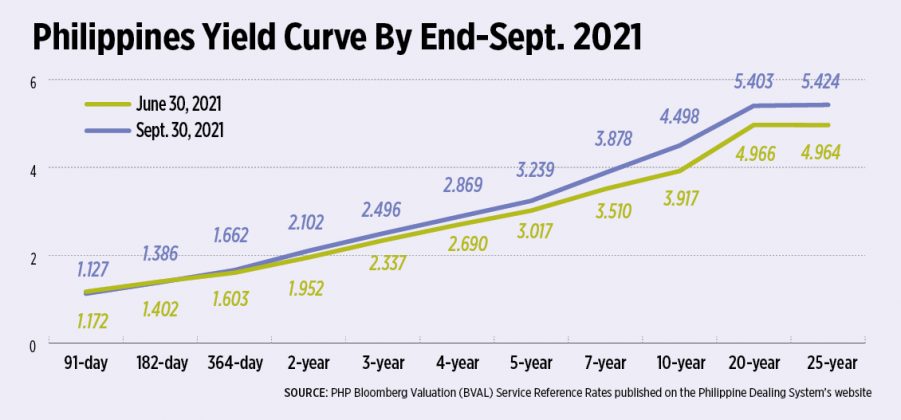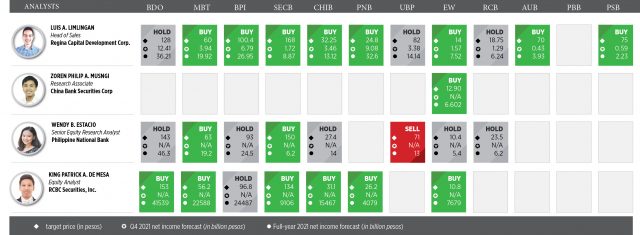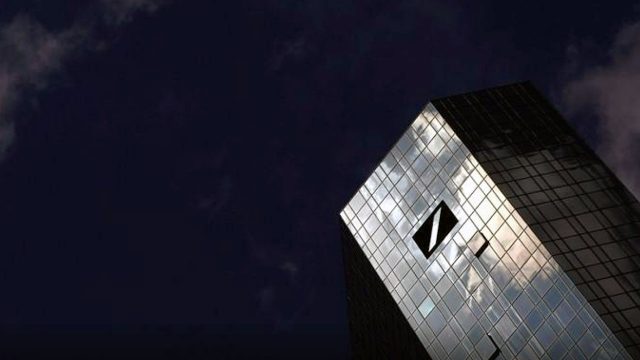Banks told to adapt as gov’t starts to unwind support from pandemic
By Lourdes O. Pilar, Researcher
WITH ECONOMIC RECOVERY expected to be underway, banks will have to tailor their relief measures accordingly as authorities begin unwinding its support to the financial sector.
This sentiment was reflected by Bangko Sentral ng Pilipinas’ (BSP) Governor Benjamin E. Diokno at a virtual convention of the Chamber of Thrift Banks on Oct. 12. In that event, Mr. Diokno encouraged banks to grant financial relief that considers the borrowers’ payment and risk-bearing capacity as lenders are not similarly affected by the coronavirus disease 2019 (COVID-19) pandemic.
Mr. Diokno added the BSP believes financial institutions have already been given enough time to assess their loan portfolio and that the central bank is “constrained from extending regulatory relief measures provided” as they will affect the banks’ viability and their capacity to continue lending.
Some of the relief measures provided by the BSP have already lapsed. For instance, the central bank’s recognition of allowances for loan losses on a staggered basis for all types of credit for retail and business borrowers affected by COVID-19 has ended on March 8.
Meanwhile, others are scheduled to lapse by the end of this year such as the reduction of the credit risk weight of loans to micro-, small-, and medium-sized enterprises (MSMEs) to 50%, the lower minimum liquidity ratio (MLR) of 16% for thrift banks from 20% previously, and the higher single borrowers’ limit (SBL) of 30% for banks from 25%.
The BSP has also permitted lenders to count their lending to MSMEs and pandemic hit large enterprises as part of banks’ alternate reserve compliance until the end of next year or will be reviewed once the limits of P300 billion for MSMEs and P425 billion for large firms would be reached.
To recall, the central bank in late April last year reduced the reserve requirement ratio (RRR) for thrift banks to 3% from 2% to provide a liquidity boost amid the ongoing pandemic. It was later extended to pandemic-hit large enterprises but are only applicable to those with asset sizes of more than P100 million but are not part of a conglomerate.
The BSP in December last year capped credit to MSME and large enterprises that banks could utilize as alternate reserve compliance at P300 billion and P425 billion, respectively.
In an e-mail to BusinessWorld, the BSP said the unwinding of the temporary relief measures “will be done in a gradual, prudent, and informed manner.”
“The time-bound nature of the BSP’s support measures allows for an orderly transition based on a holistic analysis of the impact of the COVID-19 not only on the financial system but also on other critical sectors of the economy. In particular, the BSP will consider the pace of liquidity and credit growth; improvements in market confidence and financial market activity, including the bond markets; recovery in consumer spending and private sector investment; and stability of the financial system,” the BSP said.
The BSP has emphasized the need for timely communication of policies and decisions in setting expectations as the government strikes a delicate balance between providing debt support to struggling households and firms affected by the COVID-19 pandemic and, at the same time, guard against the buildup of inflationary pressures and risks within the banking system.
As of this writing, the BSP is still assessing the duration of some of the policy relief measures it has implemented during the pandemic.
What is clear is that the central bank is retaining some of these measures at least until next year.
“The relief measures that incentivize lending to sectors such as underserved market segments, MSMEs and critically impacted large enterprises will be retained for as long as necessary to support their recovery,” the BSP said.
They also cited the recently issued two regulations that will further give banks an incentive to grant new loans or restructure the loan accounts of their borrowers.
“The first measure clarifies the prudential treatment of modifications to loan terms, including restructuring arrangements, and will be in effect until [Dec. 31, 2022]. The second measure allows banks to add back to their capital, the increase in provisioning requirements applicable to new and restructured loans starting [Jan. 1, 2022 until Dec. 31, 2023],” the BSP said, explaining these measures look to temper the impact of provisioning requirements on new and restructured loans on capital which will provide banks with room to further tailor loan terms to their clients’ requirements.
TAILORED APPROACH
On top of these measures, the BSP has allowed banks to provide financial relief to their borrowers through loan payment terms that considers their paying capacity and cash flows.
“This tailored approach will allow banks and their clients to arrive at mutually agreeable loan payment terms that consider the bank’s financial capability and the client’s requirements. This also increases likelihood of loan collection rather than loan default,” the BSP said.
With this flexibility, banks are expected to look into the borrowers’ reputation, as well as the purpose of credit, and sources of repayment and capacity to repay based on cash flow projections, the BSP said. In the case of commercial credits, the BSP said banks should consider the firm’s business expertise, its credit relationships including its shareholders and directors, and the status of the borrower’s economic sector, among others.
“It is also important for the bank to distinguish between borrowers that are facing serious or temporary financial difficulties and employ the appropriate risk management and remedial or workout measures on their exposures to these borrowers,” the BSP noted.
In an e-mail, Development Bank of the Philippines (DBP) President and Chief Executive Officer Emmanuel G. Herbosa noted that in addition to payment moratoriums, waiver of penalties and other fees and additional low-interest facilities, the bank has also “proactively implemented loans restructuring… to recalibrate and adjust the payment schedules and terms of outstanding loans of enterprises given the new realities of their operations.”
“Conditions that are now the ‘new normal’ of their business transactions are considered in either extending loan tenors, repricing loans, extending grace periods, and other payment schemes that allow the bank to capture cash flow for repayment without impairing the businesses’ capacity to operate sustainably,” Mr. Herbosa said.
For its part, BDO Unibank, Inc. said it has proactively engaged with its borrower clients to help them weather the challenges brought by the health and economic crisis.
“We ensured continued access to credit facilities for clients with resilient and sustainable business models amid the pandemic, as well as granted loan moratoria to qualified customers in compliance with Bayanihan Acts I and II,” BDO said.
BDO added it offered loan restructuring packages for its clients in the hard-hit travel, tourism, retail, and transportation sectors to tailor fit cash flow capabilities that are specific to their needs.
Thrift bank Bank of Makati, Inc. (BMI) also provided loan restructuring, as well as payment arrangements and the waiving of penalties among their qualified clients.
BMI said it would be favorable for bank if the BSP retains some of its relief measures such as the use of qualified MSME loans for compliance with reserve requirements, the lower risk weight for qualified MSME loans for the purposes of CAR (capital adequacy ratio) computation.
DBP’s Mr. Herbosa shared a similar assessment, noting that the measures that reduced credit risk weights of loans to MSMEs, the staggered booking of allowance for credit losses, and the counting of MSME loans as compliance to the RRR “greatly enhanced” DBP’s ability to continue lending to those that were most adversely affected by COVID-19.
“Without such relief measures, the bank’s capital ratios would not have been able to carry the additional risks of continuous on-lending to distressed industries,” Mr. Herbosa said.
Nevertheless, Mr. Herbosa said the prevailing economic conditions has compressed the state lender’s margins this year.
“The low interest rate environment resulting in a lack of high-yielding investment instruments, as well as the bank’s mandate to lend to distressed sectors at below market rates, have limited its capacity to generate profits. Additionally, due to a number of loans falling past due this year, the provisioning requirements for non-performing loans have further reduced its bottom line. Its thinning margins has caused the Bank to prioritize and carefully consider its interventions and assistance, recognizing its own institutional challenges,” Mr. Herbosa said.
“[A]s a licensed universal bank, DBP also maintains the same minimum capital and other regulatory ratios expected from private commercial banks, therefore increased pressure on these ratios brought about by lending to risky sectors within a volatile economic environment further limits its capacity to extend more generous assistance. Unlike private commercial banks that can easily raise capital from the market, DBP’s options as a wholly government-owned development bank is limited and it can only increase its capital through income and direct capital infusion,” he noted further.
Likewise, ING Bank N.V. Manila Senior Economist Nicholas Antonio T. Mapa said the decision to allow lending to firms as alternative compliance for RRR “is a good relief measure given that the overall directive is to lower the RRR.”
“This way, banks can free up more funds for lending activities,” he said.
Mr. Mapa added these relief measures should remain in place to further help bolster bank lending.
“Despite aggressive rate cuts by the BSP, banks have not passed on lower borrowing costs to consumers just yet. This is likely the reason why the lagged impact of policy rate cuts has taken eight months. With the economy still not fully healed, perhaps BSP should still encourage banks to lend and keep these measures until capital formation rebounds in a convincing manner,” Mr. Mapa said.
Latest data by the BSP showed outstanding loans by universal and commercial banks (U/KBs) increased 2.7% in September, following an annual 1.3% growth in August. Prior to that, it had declined for eight straight months.
OUTLOOK
As of the third quarter of 2021, the country’s gross domestic product (GDP) expanded by 4.9%, within the government’s revised 4-5% target range for the entire year.
The BSP said the country’s banks “remain cautiously optimistic, projecting positive business outlook in the next two years.”
“Results of the First Semester 2021 Banking Sector Outlook Survey show that banks will remain stable with prospects of double-digit growth (between 10% and 15%) in assets, loans, investments, deposits, and net income,” the BSP said.
“Meanwhile, results of the latest consumer and business confidence survey likewise indicate a more optimistic/encouraging outlook in the succeeding quarters. This is expected to prop up credit and lending activities in the coming months,” it added.
BDO noted that their clients can expect a further rollout in its new digital capabilities as investments in their digital capabilities bear fruit.
“We launched early this year our mobile wallet, BDO Pay, and re-engineered our operations to allow paperless in-branch transactions, card-less ATM transactions using biometrics and QR codes, and fully digital account opening while continuing to ensure compliance with KYC (know-your-client) requirements,” BDO said.
DBP’s Mr. Herbosa was similarly upbeat: “Barring another surge in COVID-19 cases, the country may face a better economic environment in 2022 and moving forward. With recovery plans updated and readily in place, the bank in particular, is better prepared for a possible similar disruption in the future,” he said.
“The bank’s umbrella program for COVID-19, the DBP RESPONSE (Rehabilitation Support Program on Severe Events), will remain as its primary flagship credit assistance facility post-pandemic. Under the program, credit packages that are tailor-fit to the needs of affected industries and those that effectively support business transformation and resiliency will remain accessible to enterprises. This is in addition to grants from the National Government that may be tapped through DBP, such as the P1-billion interest subsidy fund for local government units for their pandemic recovery projects,” he explained further.
In line with market expectations, the BMI expects the economy to return to pre-pandemic levels by the second quarter of this year profits. BMI expects its MSME clients to start recovering from the effects of the pandemic.
“This market improvement would enable the Bank to focus on its strategies of creating a better customer experience for its clients. Aligned to its tagline of being a Malalapitan, Maaasahang Kaibigan (A Reliable Friend), the bank will be introducing new products and services that would cater to the changing needs of the market and empower existing and potential clients’ to recover and grow their businesses,” the thrift bank said.
ING Bank’s Mr. Mapa noted that while lenders have remained resilient throughout the pandemic, they have “largely remained on the sidelines in terms of contributing to the recovery story.”
“Lending rates have even increased after BSP rate cuts, which may have made it more difficult for consumers and firms to access much needed financing,” Mr. Mapa said.
“With the economy on surer footing this year, perhaps banks can join in and jump headlong to help contribute to the recovery by performing its primary function of delivering credit to real sector activities that in turn will fuel capital formation and drive GDP growth into higher gear,” he added.






















